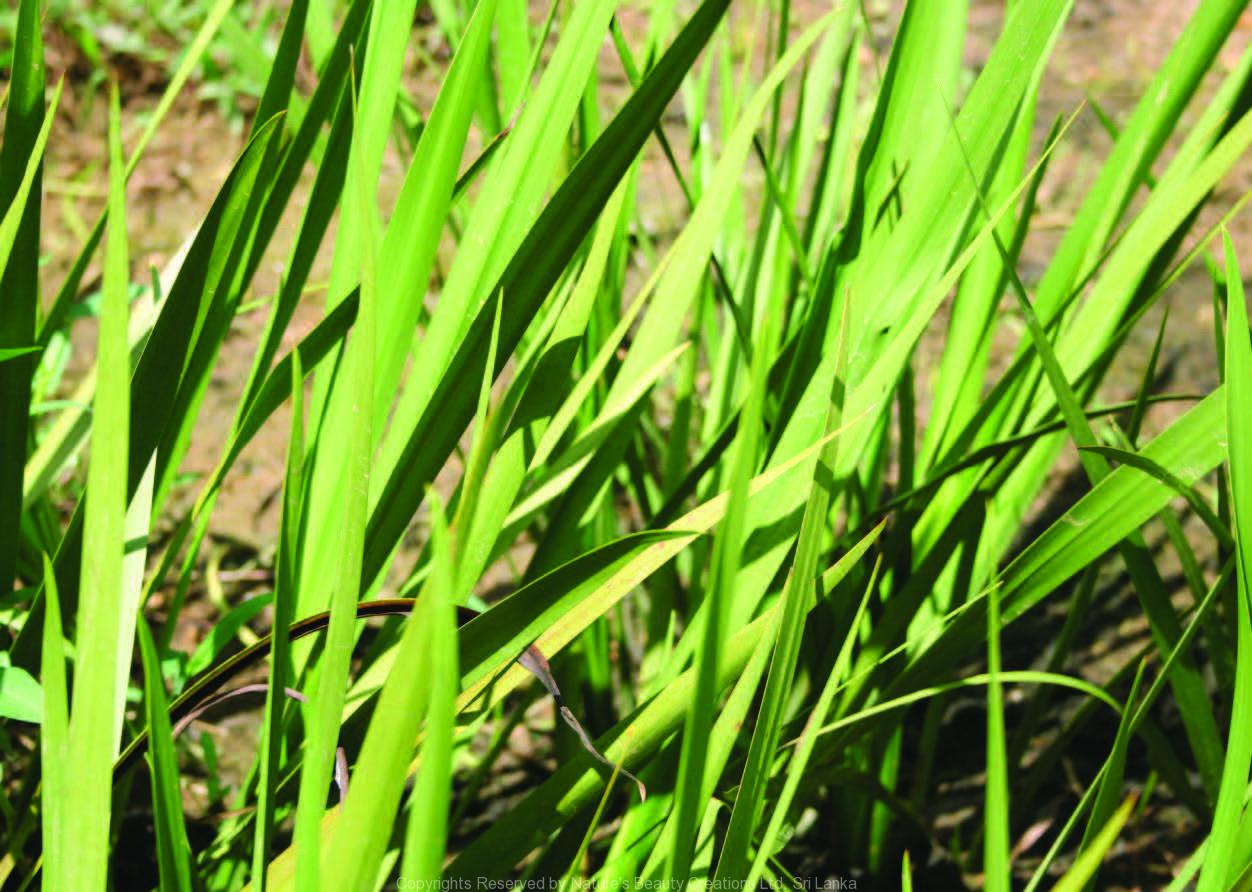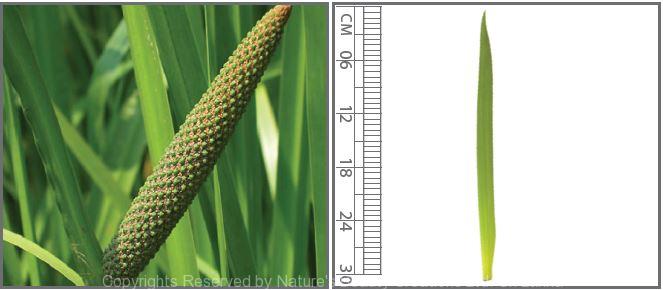

Traditional Knowledge
Useful plant parts :
Rhizome
Uses in traditional medicine :
- Rhizome is chewed to relieve toothache
- Powdered rhizome (low dosage) with breast milk acts as a brain tonic and memory stimulant
- Rhizome is stomachic and carminative in small doses, emetic in large doses
- Remedy for flatulence, colic, dyspepsia, asthma, intermittent fever, bowel complications anaemia and dysentery in children
Scientific Research
Chemical constituents:
α-asarone, (E)- methylisoeygenol, methyleugenol and β-asarone from rhizome essential oil; sesquiterpenes: trihydroxy eudesmane, bullatantriol, teuclatriol, eudesmin, magnolin and its derivatives and sitosterol from plant
Bioactivity :
Alcohol extracts of rhizomes: antifungal, antiproliferative, immunosuppressive; water extract of leaves: anti-inflammatory
Clinical:
Note :
An aquatic herb which can be cultivated in marshlands
References : Kim, H. et al., (2009), Anti-inflammatory activity of a water extract of Acorus calamus L. leaves on keratinocyte HaCaT cells, Journal of Ethnopharmacology, 122(1), 149-156. Liu, X. C. et al., (2013), Identification of insecticidal constituents of the essential oil of Acorus calamus rhizomes against Liposcelis bostry- chophila Badonnel, Molecules, 18(5), 5684-96. Metrotra, S. et al., (2003), Anticellular and immunosuppressive properties of ethanolic extract of Acorus calamus rhizome, International Immunopharmacology, 3(1), 53-61. Phongpaichit, S. et al., (2005), Antimicrobial activities of the crude methanol extract of Acorus calamus Linn., Songklanakarin Journal of Science and Technology, 27(2), 517-523. Qiao, D. et al., (2012), Chemical constituents of Acorus calamus, Zhongguo Zhong Yao Za Zhi, 37(22), 3430-3.
Copyrights Reserved By
Natures Beauty Creations




